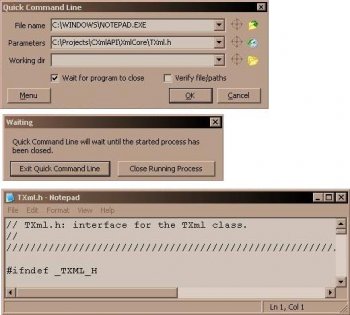
bin/ls: test.txt: No such file or directoryįigure 2.7: Renaming ‘test.txt’ to ‘old.txt’.Īs you can see in Figure 2.7 the file was successfully renamed and the ‘ test.txt‘ filename no longer exists because it had been renamed. The mv command takes a few qualifiers and requires at least to arguments, if you are moving a file from one location to another you have to specify the first argument as the filename and the second argument as the destination directory, if you are renaming a file your first argument should be the filename and the second argument should be its new name. The first example that we will look at is renaming the ‘ test.txt‘ file to ‘ old.txt‘, Figure 2.7 shows the command used to rename the file. This command is used for renaming files and moving them from one location to another. The forth command that we will look at is mv. You will also notice that the original copy is still in its current location. linux-y2v4:~ # cp test.txt /home/įigure 2.6: Copying a file from one location to another.Īs you can see from Figure 2.6 the file was successfully copied to the /home directory. The first argument is the filename of the file we would like to copy and the second argument is the destination of where we would like to copy the file to as shown in Figure 2.6. The cp command takes a wide variety of qualifiers, however, we will only be supplying two arguments with the cp command. This command is used for copying files from one location to another. The forth command that we will look at is cp. The rm command takes a wide variety of qualifiers but we will be just using it to simply remove a file so we will only supply one argument which will be the filename as shown in Figure 2.5. The third command that we will look at is rm.
#Command line find file update#
The touch command can also be used to update the timestamp for a file or directory. linux-y2v4:~ # touch test.txtĪs you can see in Figure 2.4 the file was created successfully. The touch command takes one argument which is the name of the file you would like to create as shown in Figure 2.4. This command allow you to create empty files. The third command that we will look at is touch.
#Command line find file how to#
Figure 2.3 shows the command use to remove the ‘test’ directory and also how to remove multiple directories with brace expansion. The rmdir command also accepts brace expansion which is identical to mkdir. The rmdir command takes one argument which is the name of the directory you would like to remove. However, when using this command the directory has to be empty otherwise the directory will not be removed. This command removes directories from the file system. The second command that we will look at is rmdir. The second command I executed contained an asterisk (*) this character is known as a wild card and means any character, for example the second command means display any files or directories in long listing format that start with the word ‘tes’. linux-y2v4:~ # mkdir tesįigure 2.2: Creating multiple directories with one command.Īs you can see from Figure 2.2 four directories were created ‘tes1’, ‘tes2’, ‘tes3’ and ‘tes4’. The mkdir also accepts brace expansion which allows you to create multiple directories with one command as shown in Figure 2.2. linux-y2v4:~ # mkdir testĪs you can see from Figure 2.1 the directory was created successfully. The mkdir command takes one argument which is the directory name you would like to create as shown in Figure 2.1.

The first command that we will look at is mkdir which creates directories.

In this section of the article we will look at moving files and directories around the file system, copying files and directories and finally creating and deleting files and directories. This article is aimed at new users to the SUSE Linux Enterprise distribution.

The tasks that will be covered in this document are managing files and directories, finding files, getting help, redirecting I/O and command chaining. We will look at some of the common commands used to utilized the SUSE Linux Enterprise distribution.

In this article we will look at working with Linux from the command line.


 0 kommentar(er)
0 kommentar(er)
